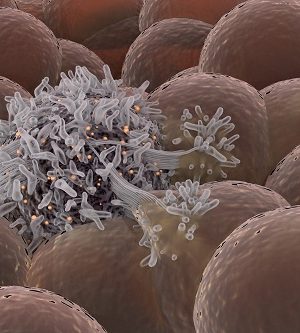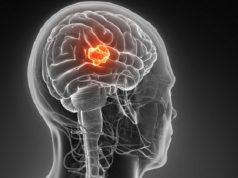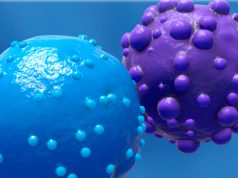November 28, 2017 (Discovery Medicine)
Glioblastoma remains a major unmet medical need in the field of oncology. With less than 10% of patients surviving five years from initial diagnosis, it is considered an incurable disease. Current studies have shown that current treatment therapies do not offer much hope for patient survival. Glioblastoma tumors are deemed as immunologically “cold,” meaning that immune cells cannot even come close to or enter within the tumor. There are a number of major, complex factors that robustly stand in the way and contribute to the great difficulty in attempting to treat glioblastoma tumors. The following is one description of the immunologically “cold” presence Glioblastoma tumors exhibit: In an analysis of 171 glioblastoma cases, it was shown that 54 percent of tumors had no detectable white blood cells, 35 percent had immune cells detected in half the tumor, a measly 11 percent had white blood cells detected in more than 50 percent of the tumor.
Since glioblastomas are “cold” tumors, these tumors are often less immunogenic, meaning that they are less capable of eliciting an immune response against invading forces. Glioblastomas tend to express PD-L1 at low levels and usually have low response rates to immune check point inhibitors. Glioblastomas block T cell migration by the mixture of cytokines and chemical factors that they possess in their microenvironment. Further complicating their microenvironment, glioblastomas are permeated by myeloid cells which compose 30-50 percent of the tumor, and whose purpose is to block and inactivate effector immune cells that try to invade the tumor. Based on the previous, it is no wonder no therapies stand a chance against this tumor type.
The question now is: Can these profound complexities be overcome? The above factors that give glioblastoma its term, “cold” tumors, can be viewed as pathways for trying to overcome seemingly impossible hurdles. While much research is crucial for discovering ways of overpowering glioblastoma, a major goal is focused on reversing the immunologic desert that almost always exhibits a lack of immune cells within the microenvironment of these tumors, activating these response in the tumor, while simultaneously, weakening the immunosuppressing factors already present in glioblastoma’s microenvironment. If this can be understood, better therapy approaches could be possible in the future for effectively treating Glioblastoma.






